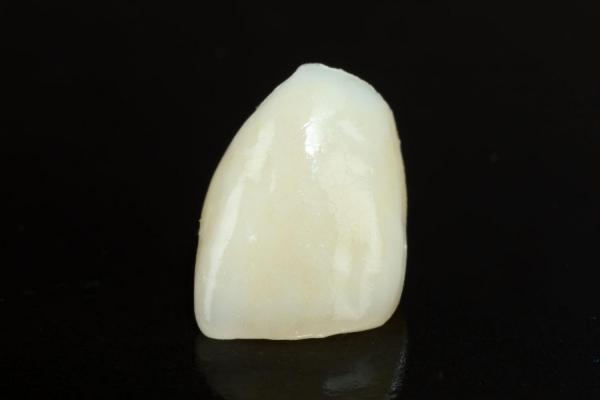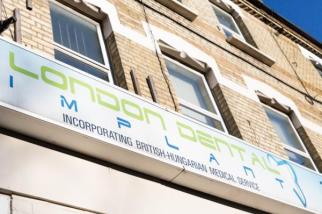
As a patient you want the best for your teeth since they are a vital part of your overall well-being. You want them to look perfect so that you won't have to compromise on your smile. You feel confident when your smile is perfect and dazzling. However, it may be confusing sometimes as to what treatment you should go for.
What is a crown?
A dental crown or cap is a sort of covering for the tooth or teeth which can be used in a variety of cases. The basic function is to protect the tooth. In many cases, however, it may be used to change the appearance of tooth/teeth. They can broadly be of two types: ceramic combined with metal and those made up of only ceramic.
Metal ceramic crowns are the traditional ones which are less expensive but do not give as satisfactory results as ceramic crowns do. On the other hand, all ceramic crowns are a bit more expensive but have far better aesthetics and are specially preferred for front teeth because the colour of the crown matches exactly your tooth colour. Both zirconium and E-max are all ceramic crown
Crowns are not directly placed on the tooth. the tooth is first prepared by filing it a little from all sides (depending on the condition of the tooth). Then an impression is taken of the tooth which is sent to the lab for fabrication of the crown. Each crown is custom made according to the size of the original tooth. If more than one tooth requires capping, it may take longer and may even require a temporary crown for a short while. When the new crown is returned to the dentist, it will be cemented to the tooth. This whole procedure may take 2-3 visits to your dentist.
When do you need one?
Dental crowns can be used in varied scenarios. For example, if you have undergone a root canal treatment for a tooth infection, a crown is required to protect the treated tooth from damage since the natural tooth becomes brittle after such procedures, and also may discolour over time. Also, often crowns will be placed for aesthetic purposes. Stains which cannot be managed by bleaching methods such as those caused by fluorides, may require a crown to cover them. They are also needed for bridges where support from adjacent teeth is required to replace missing tooth.
What is an E-max crown?
These are special type of crowns made from lithium disilicate material. Also, these crowns are made from a single block of this material which makes it a high strength crown. Lithium disilicate is known for its superior strength and appealing aesthetics as a restorative crown material. E-max crowns are slightly translucent and hence come closest to matching your teeth colour. This property has made it a popular choice for crown restoration especially in front teeth.
How is it different from the regular zirconiium crown?
The main factors that differentiate a zirconium crown from E-max are strength and aesthetics. As mentioned earlier, E-max crowns are made from a tough material called lithium disilicate and from a single block. Which means there are no joints whatsoever in the crown and thus, they are better equipped to withstand pressure than the zirconium crowns. Hence, there is a less chance of chipping or the crown breaking.
Looks wise, the zirconium crowns don't always exactly match the natural tooth colour. They may appear unnatural and distinguishable from the rest of your teeth. The advantage that an E-max crown has over zirconium is its translucency. The crown colour can match exactly the colour of the teeth adjacent to where the crown will be placed. The range of shades available for an E-max crown is more as compared to a zirconium crown. This drastically increases the chances of an exact colour match comparted to the zirconium crown.
Is there a downside to E-max crowns?
There are certain points regarding E-max crowns which should be kept in mind when deciding the crown restoration for your teeth. Front teeth usually don't exert heavy forces during the chewing of food compared to the back teeth do. So, in these areas, an E-max crown is preferable.
Also, since front teeth are the most visible ones, they need crowns that exactly match the adjacent tooth colour. But in the posterior teeth or back teeth where masticatory forces are heavy, all ceramic crowns, be it zirconium or E-max, should be avoided. Especially if more than one tooth has to be capped i.e.in multi-unit crowns such as in cases of a bridge. These areas should be restored with metal ceramic crowns for better strength. People with the habit of grinding their teeth, called bruxism, should not be advised to have an E-max crown since they may not be able to sustain such heavy forces, even in front teeth.
So basically, E-max crowns are not meant for heavy forces.
The second possible disadvantage of an E-max crown is its cost. It is more expensive as compared to a zirconia crown and even more than a basic metal ceramic crown. It is the most common factor with the majority of people which deters them from opting for an E-max.
Should you go for the E-max?
There are many factors that determine the type of restoration you should go for. It is best if you consult your oral health care professional for the best option that suits you. Of course, if cost factor comes next to durability while deciding, E-max crowns should be the first option while choosing a crown restoration for your teeth.
After all, nothing will boost up your confidence as much as a dazzling and confident smile!


